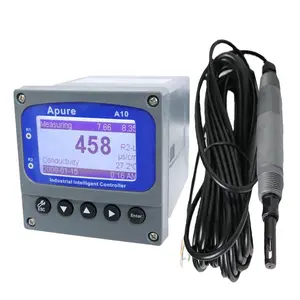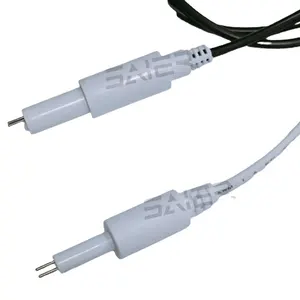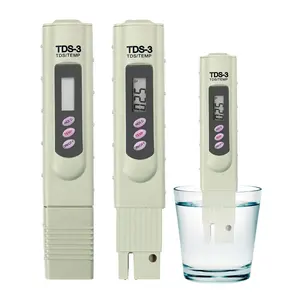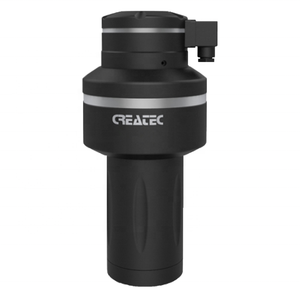Whether water quality is good or not has a significant impact on people's health and lives. TDS (total dissolved solids) is one of the important indicators used to evaluate water quality. TDS refers to the concentration of total dissolved solids in water in milligrams/liter (mg/L). It mainly reflects the concentration of Ca2+ MG2+ Na+ K+ plasma in water.
What is a TDS meter?
TDS meter is a special tester used to measure the total dissolved solids content in water. Pure water contains very little total dissolved solids, ranging from zero to tens of milligrams per liter. If the water is contaminated or has been dissolved into many other electrolytic substances, its total solid content will increase. The user only needs to insert the end of the TDS meter into the water being tested, and the TDS meter will immediately test and display the content of dissolved solids in the water. In other words, the number displayed on the TDS meter is the total content of substances dissolved in the water. TDS meters are widely used in fields such as electric power, agriculture, medicine, food, scientific research, and environmental protection. TDS meter is also necessary inspection equipment for QS and HACCP certification in food factories and drinking water plants.
TDS meter readings
Generally speaking, the cleaner the water quality, the lower the TDS value. In this way, people can understand that TDS can reflect the dissolved "impurities" in the water, including inorganic ions and some organic matter. "Impurities" include those that are harmless to humans and those that are harmful to humans. According to the data, TDS values 0 to 9 belong to purified water, TDS values 10 to 50 belong to purified water, TDS values 51 to 100 belong to clean water, and TDS values 100 to 300 belong to tap water. If it exceeds 600, it can be said to be polluted water. The TDS meter detects tap water below 300PPM as normal, purified water below 50PPM as normal, and mineral water between 100PPM and 200PPM as normal. The smaller the value displayed by the TDS meter, the higher the purity of the water. The larger the value displayed, the higher the content of dissolved impurities in the water.
It should be noted that TDS can only reflect the concentration of impurities contained in water to a certain extent but cannot determine whether the impurities are harmful. In addition, TDS cannot reflect the content of other harmful substances in the water, such as heavy metal ions and bacterial counts. Therefore, people cannot judge the quality of water based on TDS value alone. An excessively high TDS value (over 600 mg/L) may mean that the water quality is not suitable for human consumption.
How to use TDS meter?
Remove the pen cover of the TDS meter and turn on the ON switch. Put the TDS meter into the test solution. Stir the TDS meter in the solution and wait until the reading is stable (10-30 seconds). TDS value will be displayed on the screen. To lock the value, press the HOLD key. After use, wipe away the water on the TDS meter and cover the pen cover of the TDS meter.
Why people should buy a TDS meter?
For families, the portable water TDS meter is a good tool. It can objectively tell people what the current state of the water is. It can test the water quality after filtration in kettles and water purifiers to see if the core needs to be changed. After all, The prompts of water purifiers are not necessarily accurate, and quite a few water purifiers do not have the function of reminding people to change the filter element. Set an expected value in mind, and when it reaches the value, it is time to replace the filter element. A portable TDS meter is generally relatively cheap, and it is a must-have for most families.






























 浙公网安备 33010002000092号
浙公网安备 33010002000092号 浙B2-20120091-4
浙B2-20120091-4